Eric C. Sheninger's Blog, page 61
February 12, 2014
Digital Learners Need (and Deserve) Digital Leaders #DigiLead
I recently read this Education Week post by Jill Berkowicz and Ann Myers titled We Have 21st Century Learners Who Need 21st Century Leaders. I couldn't agree more. They go on the summarize the following:
The world has changed and technology has had a big impact. As the world and our lives have become more connected and influenced by the evolving technology-rich landscape our learners in turn have become wired differently. Not only are they engaged more outside of school then in, but in many cases they are constructing new knowledge, communicating, collaborating, and attempting to make sense of an array of media messages. All of these examples are at the core of essential skill sets that most schools "want" students to possess, but many schools do a poor job of creating a culture that integrates them across the curriculum. Students deserve leaders willing who are willing to extend themselves beyond their comfort zones in order to create a culture that aligns with a new vision for learning. This involves a leader's desire to take calculated risks, adapt, learn, and ultimately evolve in ways to break free of the status quo in order to create digitally rich environments that meet the needs of today's digital learners.

Image credit: http://inspiringtheact.org.au/event/u...
The number one responsibility and challenge for digital leaders is to create a relevant, meaningful, and authentic learning culture that allows students to create learning artifacts to demonstrate conceptual mastery. It also requires an open mind, vision, and strategic plan to allow students access to real-world tools to do real-world work. A common misconception is that you have to be "tech savvy" in order to be a digital leader. Of course it helps, but it is not a necessity. What is needed is a thorough understanding of what constitutes effective leadership and determining how these characteristics, skills, and practices can be improved and/or enhanced with a new mindset that views technology as a tool to support learning as opposed to just a frivolous add on. Some of the most effective digital leaders, or just leaders for that matter, build capacity in others to move the change process further. If you are a leader looking to do so, begin to have conversations with your teachers, and more importantly your students, to collaboratively create a system that works for learners as opposed to one that just acts to control them.
Societal changes as a result of technology now demand leaders to also look at how they perform other essential responsibilities to improve and move schools forward in the digital age. The Pillars of Digital Leadership provide a practical framework for any leader, regardless of technological proficiency, to improve professional practice. The tenets of leadership still apply. It should also be noted that this isn't about giving us more to do in a time when it seems like more and more is being dumped on a leader's plate. The guiding question is how can we do what we do better to become more effective and efficient while becoming improved learners, collaborators, communicators, storytellers, and change agents. If we look at the digital age as an endless era of opportunity to engage students in deeper, more relevant learning then the next logical step is to act.
We can no longer stand by idly while everything changes except for schools and learning environments. View this post as a call to action. If you are a digital leader how will you help support, cultivate, and inspire others to follow a similar path? The Age of Information and Personal Learning Networks (PLN's) provides ample resources for any leader (classroom, building, district) to find success, not to mention my new book on Digital Leadership. The challenge is to get those who do not value the role of technology in learning today, are not connected, or who are blinded by fear, misconceptions, or lack of knowledge on board. Learners across the globe are counting on our success in this endeavor. Are you up for the challenge?
"Essentially, the 21st century leader has to develop a renewed understanding of how children are learning now. It isn't about using technology because it exists. It is about how the technologies of the world have already influenced how children are learning. Bringing a technology agenda forward with the intention of improving student understanding and demonstrated success is essential. Leading the transition from 20th century to 21st century schools includes attention to the human toll it takes when such large changes are being required. Ongoing professional development, constant review and analysis of successful attempts at the changes in learning opportunities and the increasing use of technology offer momentum."
The world has changed and technology has had a big impact. As the world and our lives have become more connected and influenced by the evolving technology-rich landscape our learners in turn have become wired differently. Not only are they engaged more outside of school then in, but in many cases they are constructing new knowledge, communicating, collaborating, and attempting to make sense of an array of media messages. All of these examples are at the core of essential skill sets that most schools "want" students to possess, but many schools do a poor job of creating a culture that integrates them across the curriculum. Students deserve leaders willing who are willing to extend themselves beyond their comfort zones in order to create a culture that aligns with a new vision for learning. This involves a leader's desire to take calculated risks, adapt, learn, and ultimately evolve in ways to break free of the status quo in order to create digitally rich environments that meet the needs of today's digital learners.

Image credit: http://inspiringtheact.org.au/event/u...
The number one responsibility and challenge for digital leaders is to create a relevant, meaningful, and authentic learning culture that allows students to create learning artifacts to demonstrate conceptual mastery. It also requires an open mind, vision, and strategic plan to allow students access to real-world tools to do real-world work. A common misconception is that you have to be "tech savvy" in order to be a digital leader. Of course it helps, but it is not a necessity. What is needed is a thorough understanding of what constitutes effective leadership and determining how these characteristics, skills, and practices can be improved and/or enhanced with a new mindset that views technology as a tool to support learning as opposed to just a frivolous add on. Some of the most effective digital leaders, or just leaders for that matter, build capacity in others to move the change process further. If you are a leader looking to do so, begin to have conversations with your teachers, and more importantly your students, to collaboratively create a system that works for learners as opposed to one that just acts to control them.
Societal changes as a result of technology now demand leaders to also look at how they perform other essential responsibilities to improve and move schools forward in the digital age. The Pillars of Digital Leadership provide a practical framework for any leader, regardless of technological proficiency, to improve professional practice. The tenets of leadership still apply. It should also be noted that this isn't about giving us more to do in a time when it seems like more and more is being dumped on a leader's plate. The guiding question is how can we do what we do better to become more effective and efficient while becoming improved learners, collaborators, communicators, storytellers, and change agents. If we look at the digital age as an endless era of opportunity to engage students in deeper, more relevant learning then the next logical step is to act.
We can no longer stand by idly while everything changes except for schools and learning environments. View this post as a call to action. If you are a digital leader how will you help support, cultivate, and inspire others to follow a similar path? The Age of Information and Personal Learning Networks (PLN's) provides ample resources for any leader (classroom, building, district) to find success, not to mention my new book on Digital Leadership. The challenge is to get those who do not value the role of technology in learning today, are not connected, or who are blinded by fear, misconceptions, or lack of knowledge on board. Learners across the globe are counting on our success in this endeavor. Are you up for the challenge?
Published on February 12, 2014 14:05
February 9, 2014
Revolutionizing How Students Choose a Degree
The following is a sponsored post by DegreeStory.com.
What degree should I get? Do I follow my passion and become a fine art major at the risk of financial stability? Do I pursue software engineering to land that great job out of college?
These are important questions.
In recent years, these questions have become more complex. Should I get an online degree or should I attend a brick and mortar school? Is a bachelor’s degree even valuable anymore or should I pursue a master’s? Are entry-level jobs available in our struggling economy? Do I even need to go to college? How much debt should I take on?
Finally, throw into the mix some personal questions. What am I best at? What can I see myself doing for the rest of my life? Do I need to move in order to pursue my career? Do I value financial rewards or work-life-balance? What if I want to start a family? Do I work to live or live to work?
These are tough questions for anybody at any age. Yet, these are the questions that we expect our college students to answer. They are bright and motivated but are not properly equipped to make a wise decision.
Ultimately, what they lack is experience. It’s almost impossible to draw on a part-time babysitting job to gain the requisite clarity to choose a professional career path. There is a world of difference between a restaurant hostess and an ‘8-5’ as a financial analyst for a REIT.
According to this article by the New York Times, students understand their dilemma and thus are postponing the decision. Unfortunately, this indecision can increase the already rising cost of higher education, further compounding the problem.
It’s a complex situation that has yet to be addressed in a meaningful way.
This is why we built DegreeStory.com.

Our mission is to connect these young adults with the experience of those who have gone before. Those with the most to contribute are not the professional journalists and writers but the people who are actually in the careers. Why have a journalist give a 3rd party analysis of software engineering when you could have a programmer just speak from experience?
DegreeStory.com gives a platform for professionals to write about their experiences. It is open format and we welcome any and all thoughts regarding careers and degrees. These students need to hear reality. They need to understand the ups and downs that are present in every profession.
While a single story is indeed helpful, the true power of degreestory.com is found when all of the stories are taken together. As a college student, imagine being able to browse through thousands of stories from real people who are actively working in the field that you might choose.
We categorize these stories and make them easy to find. Thus, a young aspiring clinical psychologist has the ability to call up stories by other clinical psychologists. Furthermore, he has the power to filter by salary, experience, school and more to find stories that perfectly match his search criteria.
This is the missing piece for these young people who are thrust into these decisions.
As somebody who is in education, your story is valuable. Thousands of potential teachers need to understand what it’s really like. Would you share your story? It’s simple. If you want to share your general experience, you can start writing here. If you want to enter one of our writing contests for teachers, you can click here.
Published on February 09, 2014 07:07
February 6, 2014
Snow Days Don't Stop Digital Learning at #NMHS
The now annual Digital Learning Day was set for Wednesday February 5, 2014. The only problem was that no one told the weather gods this. As a result, the Northeast was once again hit with a huge winter storm, which came on the heels of one earlier in the week that dumped over 8 inches of snow. This monstrosity brought more sleet and ice, which necessitated yet another day off from school.
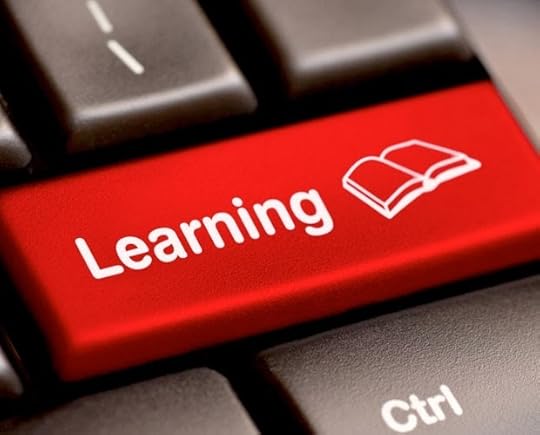 Image credit: http://www.edudemic.com/
Image credit: http://www.edudemic.com/
Many of my teachers had specific activities planned for Digital Learning Day. Most schools and educators that suffered the same fate as us were probably demoralized by the fact that all of their planning was for naught. This certainly was not the case for us at NMHS. Why might you ask? The answer is simple. For the past couple of years every day is treated as Digital Learning Day as we have moved to create a teaching and learning culture rich in authentic activities where students are engaged and take ownership of their learning. Below is a rundown of activities that were planned. I have changed everything to the past tense, as there is no doubt in my mind that my teachers will follow through with these activities. It is just what we do at NMHS.
All students in Mrs. Chellani's Calculus, Pre-Calculus, and Algebra I courses viewed videos, utilized interactive apps on their cell phones, and employed the Socrative app on their cell phones to learn the content, understand its real-world applications, and foster and engage in class discussion.Ms. Chowdhury's students had been learning science mostly through taking notes and memorizing formulas while she was on maternity leave. In order for her students to start learning through the inquiry method starting from the middle of the school year, she needed to re-teach some concepts more effectively. She found a game website developed by a Rutgers University physics education program graduate called The Universe and More. This website has amazing games that summarize most of the kinematics unit. Students often are not willing to learn the same concept twice thinking that they already know it. These games on the website are fun and challenging, and the students really have to understand kinematics in order to improve levels. Every next level is locked until they can pass the previous level. Some students may be inclined to guess to complete a level, but after a couple levels of guessing they will find a pattern to the guessing, which is really the goal of the game. This will help set the background knowledge for students to learn the next concepts of momentum, energy, electrostatics, etc.The Lance held (or will hold) the first ever live twitter chat party. Jelani Rogers wrote an article about the unique ways that students are inviting dates to prom ("promposals"). She posted a request using a specific twitter hashtag asking all NMHS students to tweet us their promposal pics along with a 140 character story of how it all went down. Responses are going to be incorporated into her article next week as a slideshow. Mrs. Fleming collaborated with numerous NMHS teachers. Dr. Asa-Awuku and the engineering class worked on creating innovative inventions using the Makey-Makey kits we have in our Makerspace. Mrs. Beiner and her students went to the media center to work on molecular gastronomy. They learned how to follow a digital recipe and then later in the week will be making their own digital recipes. Mr. Groff and his students used Mozilla Thimble and HTML and CSS coding to create vintage historical newspapers. Mrs. Collentine's class used TwitterMagnets to create original, creative sonnets.In Mrs. Vicari's Computer Apps and Business Strategy classes she showed students how to create a website using WIX.com.Numerous students always have the opportunity to work on IOCS projects and their virtual courses.So what did you do on Digital Learning Day 2014? More importantly, how have you embedded digital learning consistently into your school culture so that every day students are engaged in authentic tasks and are empowered to take ownership of their learning?
 Image credit: http://www.edudemic.com/
Image credit: http://www.edudemic.com/Many of my teachers had specific activities planned for Digital Learning Day. Most schools and educators that suffered the same fate as us were probably demoralized by the fact that all of their planning was for naught. This certainly was not the case for us at NMHS. Why might you ask? The answer is simple. For the past couple of years every day is treated as Digital Learning Day as we have moved to create a teaching and learning culture rich in authentic activities where students are engaged and take ownership of their learning. Below is a rundown of activities that were planned. I have changed everything to the past tense, as there is no doubt in my mind that my teachers will follow through with these activities. It is just what we do at NMHS.
All students in Mrs. Chellani's Calculus, Pre-Calculus, and Algebra I courses viewed videos, utilized interactive apps on their cell phones, and employed the Socrative app on their cell phones to learn the content, understand its real-world applications, and foster and engage in class discussion.Ms. Chowdhury's students had been learning science mostly through taking notes and memorizing formulas while she was on maternity leave. In order for her students to start learning through the inquiry method starting from the middle of the school year, she needed to re-teach some concepts more effectively. She found a game website developed by a Rutgers University physics education program graduate called The Universe and More. This website has amazing games that summarize most of the kinematics unit. Students often are not willing to learn the same concept twice thinking that they already know it. These games on the website are fun and challenging, and the students really have to understand kinematics in order to improve levels. Every next level is locked until they can pass the previous level. Some students may be inclined to guess to complete a level, but after a couple levels of guessing they will find a pattern to the guessing, which is really the goal of the game. This will help set the background knowledge for students to learn the next concepts of momentum, energy, electrostatics, etc.The Lance held (or will hold) the first ever live twitter chat party. Jelani Rogers wrote an article about the unique ways that students are inviting dates to prom ("promposals"). She posted a request using a specific twitter hashtag asking all NMHS students to tweet us their promposal pics along with a 140 character story of how it all went down. Responses are going to be incorporated into her article next week as a slideshow. Mrs. Fleming collaborated with numerous NMHS teachers. Dr. Asa-Awuku and the engineering class worked on creating innovative inventions using the Makey-Makey kits we have in our Makerspace. Mrs. Beiner and her students went to the media center to work on molecular gastronomy. They learned how to follow a digital recipe and then later in the week will be making their own digital recipes. Mr. Groff and his students used Mozilla Thimble and HTML and CSS coding to create vintage historical newspapers. Mrs. Collentine's class used TwitterMagnets to create original, creative sonnets.In Mrs. Vicari's Computer Apps and Business Strategy classes she showed students how to create a website using WIX.com.Numerous students always have the opportunity to work on IOCS projects and their virtual courses.So what did you do on Digital Learning Day 2014? More importantly, how have you embedded digital learning consistently into your school culture so that every day students are engaged in authentic tasks and are empowered to take ownership of their learning?
Published on February 06, 2014 07:17
February 2, 2014
Control or Ownership
For over a century, the industrial model of education did a fantastic job of preparing students for careers. Those careers are no longer relevant in today's rapidly changing world. With obvious remnants of this system still in place, new changes are being pushed through under the guise of education reform. Instead of preparing students for an industrialized world the education system is now being tasked with preparing all learners to be college and career ready in order to compete globally with their peers.
 Image credit: http://neatoday.org/2011/05/19/beware...
Image credit: http://neatoday.org/2011/05/19/beware...
The education system is still not changing at all and is totally based on control and compliance. The failed legacy of NCLB should provide a stark reminder that pummeling students with standardized tests will not achieve the desired outcome. So again our education system is in a pickle consisting of an outdated model and the pressure to prepare students for an absurd amount of testing days throughout the school year. The world does not rest on standardized tests. Success now lies in one's ability to create solutions to problems, collaborate with peers to meet a goal, communicate effectively, and develop unique ideas that can change things for the better.
Unfortunately the powers that be are ultimately stripping the autonomy away from educators and schools, something that has defined our country for decades. Even with an outdated model, we have still found ways to provide innovative pathways to unleash a passion for learning among our students. Control, as bad as it is in our system, has been a challenge that some have chosen to overcome. In the face of adversity, educators have strived to overcome it to benefit our most precious resource - students. However, the current rhetoric and testing blitz that is upon us seeks to not only undermine what makes education special, but to control us to a point that will break the morale of many if it hasn't already. This control will be the demise of our education system.
Up to this point I have ranted about control at the federal and state level and the dramatic impact it has, and will continue to have, on education if we don't change course. There is another type of control that we need to acknowledge that is prevalent in virtually every school in the world. This is the control fostered by administration and teachers as to how learning should, and will, be structured. This hits home for me on many fronts, as I was guilty of this years ago. We are often our own worst enemies as we work hard to control what students can do in school or classrooms. This stems from the fact that we don't want to give up control. Compliancy has worked for so long, and quite frankly we don't trust students or even our own teachers. What we don't know and understand we fear. So we react by trying to control every facet of school structure, function, and learning. This was me for many years, but thankfully I changed and I think my school bas benefited.
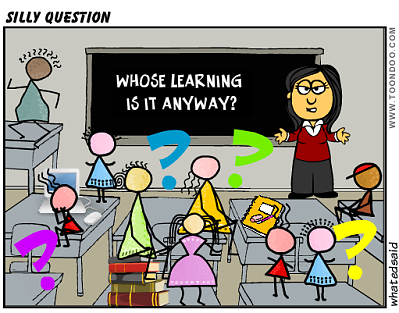 Image credit: http://whatedsaid.wordpress.com/2011/...
Image credit: http://whatedsaid.wordpress.com/2011/...
The motivation from this post came from a recent presentation I did on digital learning. The whole premise behind this concept it to provide relevancy, meaning, and authenticity in the teaching and learning process. It hinges upon our ability to provide an environment and activities that unleash our students' passion for learning and allows them to create artifacts of learning with the tools of their choice to demonstrate conceptual mastery. Additionally, it relies on a bold vision to grant students and educators the autonomy to take risks, learn from failure, and then adapt as needed. This is where we have seen a significant shift from a control to ownership of learning. Students are now able to demonstrate learning transparently for an authentic audience, allowing them to have a choice as to the device and/or tool to demonstrate and apply what they have learned. Teachers are being empowered and embracing digital learning methodologies to improve professional practice. Meaningful change will only happen if we begin to give up control and establish a culture built on trust and respect.
In the end students have taken ownership of their learning. As we continue to see the positive impacts of the changes we have willingly made, I wonder if those who are not in schools will take a second and truly reflect upon what their reform decisions are doing to schools, educators, and kids. I also hope that those who block social media, ban students’ devices, and mandate Common Core scripts understand that these decisions are destroying a love for learning. Digital learning in its many forms could be one such catalyst to put education on a better path. If we truly want to prepare the next generation of thinkers, doers, inventors, and change agents we must give up control, trust students and educators, and work to develop a better system that will produce desired outcomes.
 Image credit: http://neatoday.org/2011/05/19/beware...
Image credit: http://neatoday.org/2011/05/19/beware...The education system is still not changing at all and is totally based on control and compliance. The failed legacy of NCLB should provide a stark reminder that pummeling students with standardized tests will not achieve the desired outcome. So again our education system is in a pickle consisting of an outdated model and the pressure to prepare students for an absurd amount of testing days throughout the school year. The world does not rest on standardized tests. Success now lies in one's ability to create solutions to problems, collaborate with peers to meet a goal, communicate effectively, and develop unique ideas that can change things for the better.
Unfortunately the powers that be are ultimately stripping the autonomy away from educators and schools, something that has defined our country for decades. Even with an outdated model, we have still found ways to provide innovative pathways to unleash a passion for learning among our students. Control, as bad as it is in our system, has been a challenge that some have chosen to overcome. In the face of adversity, educators have strived to overcome it to benefit our most precious resource - students. However, the current rhetoric and testing blitz that is upon us seeks to not only undermine what makes education special, but to control us to a point that will break the morale of many if it hasn't already. This control will be the demise of our education system.
Up to this point I have ranted about control at the federal and state level and the dramatic impact it has, and will continue to have, on education if we don't change course. There is another type of control that we need to acknowledge that is prevalent in virtually every school in the world. This is the control fostered by administration and teachers as to how learning should, and will, be structured. This hits home for me on many fronts, as I was guilty of this years ago. We are often our own worst enemies as we work hard to control what students can do in school or classrooms. This stems from the fact that we don't want to give up control. Compliancy has worked for so long, and quite frankly we don't trust students or even our own teachers. What we don't know and understand we fear. So we react by trying to control every facet of school structure, function, and learning. This was me for many years, but thankfully I changed and I think my school bas benefited.
 Image credit: http://whatedsaid.wordpress.com/2011/...
Image credit: http://whatedsaid.wordpress.com/2011/...The motivation from this post came from a recent presentation I did on digital learning. The whole premise behind this concept it to provide relevancy, meaning, and authenticity in the teaching and learning process. It hinges upon our ability to provide an environment and activities that unleash our students' passion for learning and allows them to create artifacts of learning with the tools of their choice to demonstrate conceptual mastery. Additionally, it relies on a bold vision to grant students and educators the autonomy to take risks, learn from failure, and then adapt as needed. This is where we have seen a significant shift from a control to ownership of learning. Students are now able to demonstrate learning transparently for an authentic audience, allowing them to have a choice as to the device and/or tool to demonstrate and apply what they have learned. Teachers are being empowered and embracing digital learning methodologies to improve professional practice. Meaningful change will only happen if we begin to give up control and establish a culture built on trust and respect.
In the end students have taken ownership of their learning. As we continue to see the positive impacts of the changes we have willingly made, I wonder if those who are not in schools will take a second and truly reflect upon what their reform decisions are doing to schools, educators, and kids. I also hope that those who block social media, ban students’ devices, and mandate Common Core scripts understand that these decisions are destroying a love for learning. Digital learning in its many forms could be one such catalyst to put education on a better path. If we truly want to prepare the next generation of thinkers, doers, inventors, and change agents we must give up control, trust students and educators, and work to develop a better system that will produce desired outcomes.
Published on February 02, 2014 07:58
January 26, 2014
Devices Need to Support Learning
So yesterday as I was scanning the #NJED hash tag on TweetDeck I came across this intriguing image shared by Mike Marotta. It really puts into perspective why we make many of the decisions that we do at New Milford High School as to why we decided to implement a Bring Your Own Device (BYOD) initiative and don't mandate the use of one specific tool to support learning.
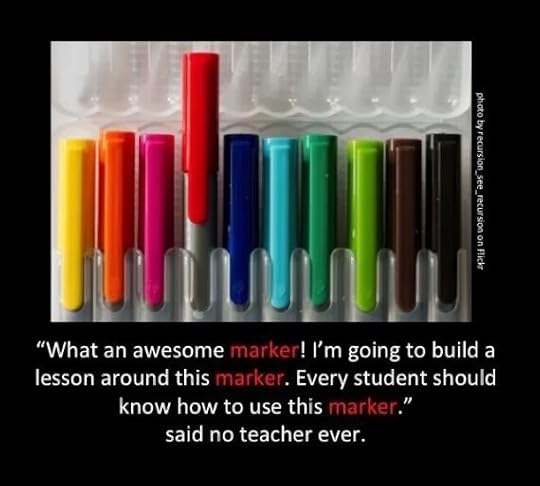
His tweet contained this message, "Don't let the device drive instruction. Let it support learning." When it comes to educational technology I often get the feeling that the learning is often secondary. Using technology just for the sake of using it equates to a huge waste of instructional time that could be dedicated to deep, meaningful learning. It also equates into a huge wast of money. All to often I have seen schools put interactive whiteboards (IWB's) in every classroom or go 1:1 with very little focus on learning.
The key is to determine what we want our students to know and let them have a choice as to how they will demonstrate and/or apply their learning. At NMHS we place a great deal of emphasis on creating artifacts to demonstrate conceptual mastery. Technology can become a nice pedagogical fit when viewed this way. Our motto is pedagogy first, technology second if appropriate when integrating mobile learning devices. Another image created by my friend Bill Ferriter puts into perspective the importance of establishing learning outcomes when integrating technology as part of the teaching and learning process.
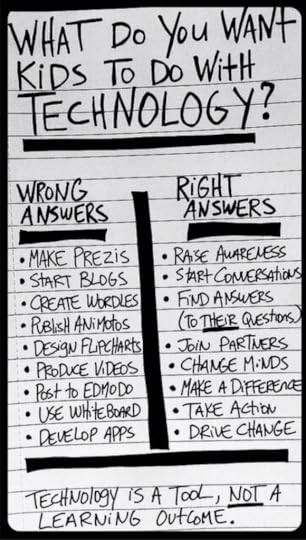 Image credit: Bill Ferriter
Image credit: Bill Ferriter
When it comes to technology we must always ask ourselves how will this tool support learning and allow students to demonstrate conceptual mastery. There must be more of a concerted focus on learning outcomes, construction of new knowledge leading to authentic application, and the development/enhancement of essential skills (creativity, critical thinking, problem solving, digital citizenship, entrepreneurship, media literacy, technological proficiency, communication, collaboration). The assessment and feedback pieces are also critical. Now let me attempt to tie this back to the first image contained in this post. Technology can be a powerful learning tool if we don't focus on the one marker, but instead what we want our students to be able to do with their choice of makers to support and demonstrate learning. I welcome your thoughts on this.

His tweet contained this message, "Don't let the device drive instruction. Let it support learning." When it comes to educational technology I often get the feeling that the learning is often secondary. Using technology just for the sake of using it equates to a huge waste of instructional time that could be dedicated to deep, meaningful learning. It also equates into a huge wast of money. All to often I have seen schools put interactive whiteboards (IWB's) in every classroom or go 1:1 with very little focus on learning.
The key is to determine what we want our students to know and let them have a choice as to how they will demonstrate and/or apply their learning. At NMHS we place a great deal of emphasis on creating artifacts to demonstrate conceptual mastery. Technology can become a nice pedagogical fit when viewed this way. Our motto is pedagogy first, technology second if appropriate when integrating mobile learning devices. Another image created by my friend Bill Ferriter puts into perspective the importance of establishing learning outcomes when integrating technology as part of the teaching and learning process.
 Image credit: Bill Ferriter
Image credit: Bill FerriterWhen it comes to technology we must always ask ourselves how will this tool support learning and allow students to demonstrate conceptual mastery. There must be more of a concerted focus on learning outcomes, construction of new knowledge leading to authentic application, and the development/enhancement of essential skills (creativity, critical thinking, problem solving, digital citizenship, entrepreneurship, media literacy, technological proficiency, communication, collaboration). The assessment and feedback pieces are also critical. Now let me attempt to tie this back to the first image contained in this post. Technology can be a powerful learning tool if we don't focus on the one marker, but instead what we want our students to be able to do with their choice of makers to support and demonstrate learning. I welcome your thoughts on this.
Published on January 26, 2014 07:03
January 22, 2014
Communicating in the Information Age
In case you didn't know we had quite a bit of snow last night in the Northeast. As I was outside in the bone-chilling cold shoveling piles of snow I began to reflect upon how my professional practice has changed in a few short years when it comes to snow days. Typically in the past I would have received a phone call compliments of a meticulously developed phone chain. The only problem was that if one person missed their call then the chain was broken. This fact of life posed quite the problem for many years. In my early years I often misplaced the snow chain or my wife would throw it out accidentally. Talk about throwing a wrench into the system. Thankfully technology came to the rescue and I wised up by saving it on my computer. I had a bit of a paper addiction that had to be overcome.
 Image credit: http://www.bestcollegesonline.com/
Image credit: http://www.bestcollegesonline.com/
Fast forward to 2014 and my district, like many others, now uses an automated notification service. Talk about convenience. I now, like everyone else in the district, receive a pushed out call with a message that district leadership develops. This message is then delivered by a polite robotic voice basically telling me that I can sleep in if I wish or spend the day slaving over my snow shovel. Now don't get me wrong, this service is great, but like anything in life it is not full-proof or the preferred way to receive the information. There is also a cost associated with any service like this.
Now here is the part of my night yesterday after receiving the snow day call that I left out. Without hesitation I immediately went to my computer and sent out the news using the NMHS social media channels (Facebook and Twitter) as well as pushing the notice out using the official school app developed by Beeonics. To some this might seem a bit redundant, but in reality I am covering all of my bases to ensure that my stakeholders get the information. In my opinion the "Information Age" demands this now.
As a digital leader I can no longer assume that an automated telephone call will reach everyone. With all of the free social media tools we have at our fingertips today it is important that we leverage them in a variety of situations to get information out to our stakeholders. We now live in the "Information Age" where access is 24/7. People routinely consume information on a variety of devices in an array of places. Virtually every other profession has not only acknowledged this fact, but has seized on the opportunity to provide the information that potential consumers want using a multifaceted social media strategy. Education and schools have been notoriously slow when it comes to adjusting to changes in society. This no longer has or should be the case.
In my opinion schools need to embrace a new vision for school communications both externally and internally. We need to think about how we also provide information in real-time to our most important stakeholder group - students. In turn, think about how our students then communicate information related to learning and school culture with each other as well as members of the community. Here are a few tips and ideas that have worked well for NMHS over the years:
Create a school Twitter and Facebook page. Make sure information is updated consistentlyHave a company develop a school app or have your students create oneDevelop, use, and promote a school hash tag that can be used across multiple platforms (Twitter, Facebook, Instagram, Google+). We use a school hash tag (#NMHS) as well as one that our Digital Journalism students created for their class (#NMHSdigijourn)Use a Google Doc for student announcements that cab be accessed through a school website and pushed out using social mediaCreate QR codes and place around the building. Information is then just one click away for a variety of stakeholdersMove from a tradition school newspaper to a digital versionBegin using ZippSlip, a tool for going paperlessGive your stakeholders options when it comes to accessing and receiving information related to your school. Even though snail mail and even email still has its place in a school communications plan we must press forward with the use of digital technologies to increase authentic engagement with our stakeholders. So what did I miss? Please feel free to add other ways you have enhanced school communications to align with the Information age in the comments section below.
 Image credit: http://www.bestcollegesonline.com/
Image credit: http://www.bestcollegesonline.com/Fast forward to 2014 and my district, like many others, now uses an automated notification service. Talk about convenience. I now, like everyone else in the district, receive a pushed out call with a message that district leadership develops. This message is then delivered by a polite robotic voice basically telling me that I can sleep in if I wish or spend the day slaving over my snow shovel. Now don't get me wrong, this service is great, but like anything in life it is not full-proof or the preferred way to receive the information. There is also a cost associated with any service like this.
Now here is the part of my night yesterday after receiving the snow day call that I left out. Without hesitation I immediately went to my computer and sent out the news using the NMHS social media channels (Facebook and Twitter) as well as pushing the notice out using the official school app developed by Beeonics. To some this might seem a bit redundant, but in reality I am covering all of my bases to ensure that my stakeholders get the information. In my opinion the "Information Age" demands this now.
As a digital leader I can no longer assume that an automated telephone call will reach everyone. With all of the free social media tools we have at our fingertips today it is important that we leverage them in a variety of situations to get information out to our stakeholders. We now live in the "Information Age" where access is 24/7. People routinely consume information on a variety of devices in an array of places. Virtually every other profession has not only acknowledged this fact, but has seized on the opportunity to provide the information that potential consumers want using a multifaceted social media strategy. Education and schools have been notoriously slow when it comes to adjusting to changes in society. This no longer has or should be the case.
In my opinion schools need to embrace a new vision for school communications both externally and internally. We need to think about how we also provide information in real-time to our most important stakeholder group - students. In turn, think about how our students then communicate information related to learning and school culture with each other as well as members of the community. Here are a few tips and ideas that have worked well for NMHS over the years:
Create a school Twitter and Facebook page. Make sure information is updated consistentlyHave a company develop a school app or have your students create oneDevelop, use, and promote a school hash tag that can be used across multiple platforms (Twitter, Facebook, Instagram, Google+). We use a school hash tag (#NMHS) as well as one that our Digital Journalism students created for their class (#NMHSdigijourn)Use a Google Doc for student announcements that cab be accessed through a school website and pushed out using social mediaCreate QR codes and place around the building. Information is then just one click away for a variety of stakeholdersMove from a tradition school newspaper to a digital versionBegin using ZippSlip, a tool for going paperlessGive your stakeholders options when it comes to accessing and receiving information related to your school. Even though snail mail and even email still has its place in a school communications plan we must press forward with the use of digital technologies to increase authentic engagement with our stakeholders. So what did I miss? Please feel free to add other ways you have enhanced school communications to align with the Information age in the comments section below.
Published on January 22, 2014 07:04
January 19, 2014
Why Digital Leadership? #digilead
If you haven’t noticed, I have been a tad bit excited over the past couple of weeks leading up to the release of my new book. This is something that I could have never dreamed of prior to social media as I felt that writing was definitely not my strong suit. Social media not only helped me find my voice, but it helped me find the voices of so many passionate and amazing educators from across the country and globe. Surrounding yourself with smart people willing to share could possibly be one of the best decisions you could make whether as a leader, educator, or learner. Almost every chapter of Digital Leadership: Changing Paradigms for Changing Times opens up with a vignette that illustrates specific characteristics, behaviors, skills, and mindsets in action.
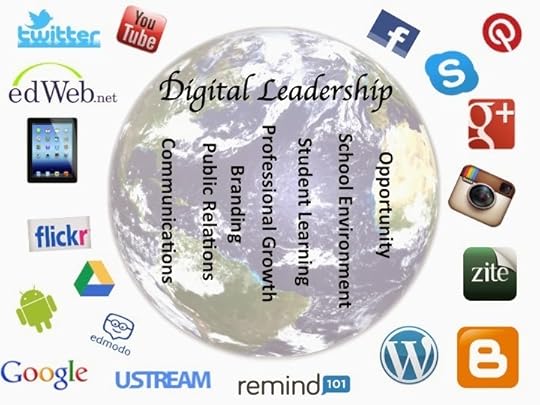 The Pillars of Digital Leadership
The Pillars of Digital LeadershipHere is a breakdown:
Forward – Some wisdom from the great Yong Zhao.Preface – What is digital leadership?A Day in the Life of a Digital Leader - Summary of what a typical day for me looks like at New Milford High School.Chapter 1: The Evolving Educational Landscape Chapter 2: Why Schools Must Change (Pam Moran)Chapter 3: Keys to Leading Sustainable Change (Spike Cook)Chapter 4: Leading With Technology (David Britten)Chapter 5: Communication (Joe Mazza)Chapter 6: Public Relations (John Carver)Chapter 7: Branding (Trish Rubin)Chapter 8: Professional Growth and Development (Lyn Hilt)Chapter 9: Increasing Student Engagement and Enhancing Learning (George Couros, Patrick Larkin)Chapter 10: Rethinking Learning Spaces and Environments (Dwight Carter)Chapter 11: Discovering Opportunity (Robert Dillon)Chapter 12: A Call to Arms (Peter DeWitt)Appendix: A collection of reproducibles and resources
Their voices and stories, as well as the work of so many other practitioners mentioned throughout the book, will help guide any educator looking to initiate meaningful change in the digital age. This is not about bells and whistles or smoke and mirrors tactics to preserve the status quo, but rather a systematic approach to transform schools in a way that works for our students and inspire those with whom we work. It is about taking a hard look at the type of school culture leaders are currently sustaining and asking is this really preparing our students for success.
I have witnessed and been a part of a dramatic transformation process at NMHS that began in 2009 when I gave social media a try. The process continues today where a culture has been built that preserves important traditional elements while pursuing an innovative agenda for growth and improvement. We are actively engaging a variety of stakeholders, who in turn have embraced the renaissance taking place. It is my hope that the collective stories, strategies, and ideas in this book will help you become an agent of change.
Three Ways to Get Digital Leadership
Now that the dust has settled since the book officially became available on January 14 the electronic versions are now ready for download. Here are the specific links:
Hardcopy (Corwin Press)Electronic eBook (eBooks) - PDF replica of the print version and can be viewed on almost any device except Kindle.Kindle (Amazon)
#DigiLead
If you want to talk about digital leadership at anytime I have created a hash tag. My hope is that we can use this on Twitter, Google+, Instagram, and Facebook to extend the conversation and our learning on this topic. Feel free to use it to ask me questions, acquire resources, or just to chat openly about how we can all become more effective leaders in a digital world.
Published on January 19, 2014 07:08
January 14, 2014
Daily Inspiration is the Norm
I'm not going to lie, New Milford High School is an amazing place to work. We have fantastic students, supportive parents, a Technology Director that gets it, and a Central Office and Board of Education that provide us with the autonomy to take risks. With these elements in place the stage is set for innovation and the creation of a school culture that works for students in the digital age. Change does not happen when all of the gears are not working in concert. What more could a Principal and learner ask for in a place to work?
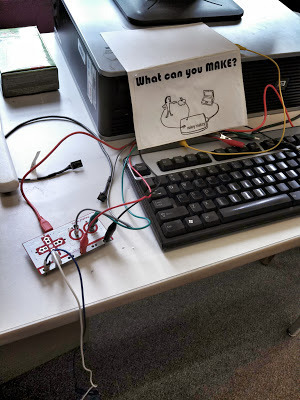 Makerspace at NMHS
Makerspace at NMHS
You know what else I love? The fact that there is so much going on these days at NMHS that it is near impossible for me to know all of the great things taking place. This is where my incredible teachers come into play. Not only are they working extremely hard to adjust to the many new mandates enacted in NJ, but in the face of this adversity they have not departed from what makes NMHS a special place to teach and learn. Instead of shying away from taking risks to improve professional practice, my teachers have readily embraced the autonomy they have been provided. Not only are they innovative and consistently redefining teaching and learning at NMHS, but they readily share their great work on a routine basis. Below is a snapshot of some of their latest work with students:
Mr. Devereaux's AP Biology class used the apps iMotion HD and Stop Motion Studio to create stop-motion videos showing the process of meiosis. They used iMovie to put voice-overs into their videos to describe the process. Mr. Groff’s US history classes piloted Paperlet, a new educationally based technology platform where students create digital stories that incorporate various multimedia elements including video, sound, and image files. The students worked with Mrs. Fleming on new Google Chromebooks in the library to design their e-books. As part of the pilot program students made recommendations to Paperlet designers on needed changes and enhancements, which were immediately made to improve student experiences. Mrs. Chellani continues to search for new ways to make the learning environment more engaging and interactive for her students. In addition to playing a review game of jeopardy via the Smart Board in her Calculus classes, she decided to have students use an interactive whiteboard on their phones by downloading the sketchpad app. As opposed to final answers being submitted on paper, Mrs. Chellani had her students use the app to submit the final answers. The learning process was much more enjoyable for the students through the use of the game and much more relevant to them through the use of the phonesStudents in Mrs. Groff’s Voices in Poetry and Prose classes have been reading independently since the beginning of the school year. They choose their own books to read based on their interests and reading levels. Students then worked with Mrs. Groff and Mrs. Fleming to create book trailers on their favorite books. Students will use WeVideo, Windows Movie Maker and other available technologies to create their videos. These trailers were then loaded onto an NMHS book trailer.Mrs. Fleming provided opportunities for the students and staff (and the district) to participate in Computer Science Education Week and the Hour of Code. Students were invited into the media center to used the computer programming tool Scratch to create interactive holiday cards. In addition, Mrs. Fleming collaborated with Mrs. Haskill’s math class as they used coding to create various things including creating their own games.This is but a small sample of what is happening at NMHS. Each day I can start my morning off with a bang by stopping by our digital journalism class to see what The Lance is up to. I count my blessings everyday that I work in a school where daily inspiration is the norm.
 Makerspace at NMHS
Makerspace at NMHSYou know what else I love? The fact that there is so much going on these days at NMHS that it is near impossible for me to know all of the great things taking place. This is where my incredible teachers come into play. Not only are they working extremely hard to adjust to the many new mandates enacted in NJ, but in the face of this adversity they have not departed from what makes NMHS a special place to teach and learn. Instead of shying away from taking risks to improve professional practice, my teachers have readily embraced the autonomy they have been provided. Not only are they innovative and consistently redefining teaching and learning at NMHS, but they readily share their great work on a routine basis. Below is a snapshot of some of their latest work with students:
Mr. Devereaux's AP Biology class used the apps iMotion HD and Stop Motion Studio to create stop-motion videos showing the process of meiosis. They used iMovie to put voice-overs into their videos to describe the process. Mr. Groff’s US history classes piloted Paperlet, a new educationally based technology platform where students create digital stories that incorporate various multimedia elements including video, sound, and image files. The students worked with Mrs. Fleming on new Google Chromebooks in the library to design their e-books. As part of the pilot program students made recommendations to Paperlet designers on needed changes and enhancements, which were immediately made to improve student experiences. Mrs. Chellani continues to search for new ways to make the learning environment more engaging and interactive for her students. In addition to playing a review game of jeopardy via the Smart Board in her Calculus classes, she decided to have students use an interactive whiteboard on their phones by downloading the sketchpad app. As opposed to final answers being submitted on paper, Mrs. Chellani had her students use the app to submit the final answers. The learning process was much more enjoyable for the students through the use of the game and much more relevant to them through the use of the phonesStudents in Mrs. Groff’s Voices in Poetry and Prose classes have been reading independently since the beginning of the school year. They choose their own books to read based on their interests and reading levels. Students then worked with Mrs. Groff and Mrs. Fleming to create book trailers on their favorite books. Students will use WeVideo, Windows Movie Maker and other available technologies to create their videos. These trailers were then loaded onto an NMHS book trailer.Mrs. Fleming provided opportunities for the students and staff (and the district) to participate in Computer Science Education Week and the Hour of Code. Students were invited into the media center to used the computer programming tool Scratch to create interactive holiday cards. In addition, Mrs. Fleming collaborated with Mrs. Haskill’s math class as they used coding to create various things including creating their own games.This is but a small sample of what is happening at NMHS. Each day I can start my morning off with a bang by stopping by our digital journalism class to see what The Lance is up to. I count my blessings everyday that I work in a school where daily inspiration is the norm.
Published on January 14, 2014 17:00
January 7, 2014
The People and Moments That Define Us
I knew early on in my education career that I wanted to be an administrator. The predominant reason for this was that I wanted to at least attempt to be a fraction of the leader that my father was. My father was an elementary principal for 30 years and I always admired how he was able to inspire his staff to focus on student learning. To say that he was beloved by all would be a significant understatement. He also consistently did those little things (dressing up for Halloween, cooking breakfast for his staff) that on the surface don’t seem like a big deal, but meant so much to his staff and students. His calm and collective nature allowed him to effectively deal with adverse situations. To this day I still go to my father for advice. To sum it up, he was the total package as an administrator.
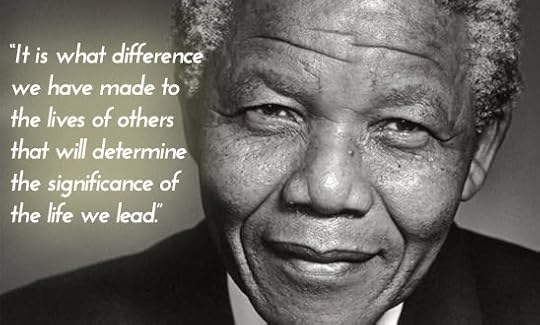 Image Credit: http://blogs.volunteermatch.org/engag...
Image Credit: http://blogs.volunteermatch.org/engag...
My second reason for wanting to become an administrator early on in my career stemmed from the fact that I wanted to help as many students as possible. As a classroom teacher I felt that my impact was limited based on the number of students I had contact with on a daily basis. But through my position as a science teacher, a coach (football, ice hockey, lacrosse), and environmental club advisor I was able to impact and influence a large number of students. However, in a school of close to 2000 learners I felt that I could do more. Due to the influence of my father and a passion to help as many students as possible succeed, I ventured into the world of educational administration in 2004.
Obviously my journey continues. After having assumed the duties of both athletic director and vice principal at New Milford High School I became the principal in 2007. It was at this point that I saw one of my dreams fulfilled, as I was finally about to walk in the footsteps of my father. As a young principal I made many mistakes in my early years. Heck, I still make many mistakes. But I learned from a mentor early on that making mistakes is okay; just don't make the same mistake twice. It was at this point that I began to take more risks to create a better teaching and learning culture at NMHS.
Up until this point in my career I would say that I followed the traditional playbook for school leaders. If I was graded I would have probably received an A for running my school where strict rules had to be followed by students, mobile devices banned, and all social media blocked. I did a great job maintaining the status quo, which was a school culture that prepared students for a workforce that no longer existed. This is how both observers and myself measured my effectiveness. I thought, and was told, that I was doing a great job, but what did I know. Obviously, not much at the time.
It was then in 2009 that I possibly took the greatest risk of my young administrative career. After reading an article in the local Sunday paper on Twitter I decided to step outside my comfort zone, disregard the perception that I had, and began to use social media as a leadership tool. What began as just a way to communicate better with my stakeholders evolved into something that I never imagined. Once in the space that social media provided, I began to lurk and learn. It was at this point that I discovered the error and ignorance of my ways. What I lacked was education on how all aspects of technology could be used to enhance learning. Individuals who I had never met face to face not only challenged my thinking, but ultimately saved my professional career. If it were not for my Personal Learning Network (PLN) I might have never changed. Without this change I would still to this day be leading a school down a path of irrelevance. My greatest leadership asset was born from a space that I swore I would never venture into. Talk about a game changing moment!
We all have those people and moments that help define our careers. For me each has helped influence my learning while providing me with the insight, tools, support, and feedback needed to become a better leader. New Milford High School has become a better institution for learning and innovation. By giving up control, trusting my students and staff, and evolving into a lead learning we continue to transform our school in ways that will better prepare our students for success in today’s society. I hope that one day my career is defined by the shifts, changes, and ultimate transformation that continue to occur at my school.
I will be forever thankful to the many people that have supported me up to this point and have provided me priceless guidance over the years. It is a humbling time for me as I walk around the halls of NMHS and see how far we have come while anticipating the work that still needs to be done. Just as significant is my growth as a leader, which in many aspects is a testament to the educators from across the globe that I now lean on day in and day out. This has led to another significant moment of my career, which is the release of my first solo book (Digital Leadership: Changing Paradigms for Changing Times). I look at it as sort of a a natural product of the ongoing changes in my professional career. It represents a culmination of OUR journey together. My hope is that this book will make a difference in the work of other leaders and those that aspire to lead. Regardless I will continue to learn from people and discover those moments that will be catalysts for further professional growth and improvement.
Who are the people and what moments have defined you as an educator and/or leader?
 Image Credit: http://blogs.volunteermatch.org/engag...
Image Credit: http://blogs.volunteermatch.org/engag...My second reason for wanting to become an administrator early on in my career stemmed from the fact that I wanted to help as many students as possible. As a classroom teacher I felt that my impact was limited based on the number of students I had contact with on a daily basis. But through my position as a science teacher, a coach (football, ice hockey, lacrosse), and environmental club advisor I was able to impact and influence a large number of students. However, in a school of close to 2000 learners I felt that I could do more. Due to the influence of my father and a passion to help as many students as possible succeed, I ventured into the world of educational administration in 2004.
Obviously my journey continues. After having assumed the duties of both athletic director and vice principal at New Milford High School I became the principal in 2007. It was at this point that I saw one of my dreams fulfilled, as I was finally about to walk in the footsteps of my father. As a young principal I made many mistakes in my early years. Heck, I still make many mistakes. But I learned from a mentor early on that making mistakes is okay; just don't make the same mistake twice. It was at this point that I began to take more risks to create a better teaching and learning culture at NMHS.
Up until this point in my career I would say that I followed the traditional playbook for school leaders. If I was graded I would have probably received an A for running my school where strict rules had to be followed by students, mobile devices banned, and all social media blocked. I did a great job maintaining the status quo, which was a school culture that prepared students for a workforce that no longer existed. This is how both observers and myself measured my effectiveness. I thought, and was told, that I was doing a great job, but what did I know. Obviously, not much at the time.
It was then in 2009 that I possibly took the greatest risk of my young administrative career. After reading an article in the local Sunday paper on Twitter I decided to step outside my comfort zone, disregard the perception that I had, and began to use social media as a leadership tool. What began as just a way to communicate better with my stakeholders evolved into something that I never imagined. Once in the space that social media provided, I began to lurk and learn. It was at this point that I discovered the error and ignorance of my ways. What I lacked was education on how all aspects of technology could be used to enhance learning. Individuals who I had never met face to face not only challenged my thinking, but ultimately saved my professional career. If it were not for my Personal Learning Network (PLN) I might have never changed. Without this change I would still to this day be leading a school down a path of irrelevance. My greatest leadership asset was born from a space that I swore I would never venture into. Talk about a game changing moment!
We all have those people and moments that help define our careers. For me each has helped influence my learning while providing me with the insight, tools, support, and feedback needed to become a better leader. New Milford High School has become a better institution for learning and innovation. By giving up control, trusting my students and staff, and evolving into a lead learning we continue to transform our school in ways that will better prepare our students for success in today’s society. I hope that one day my career is defined by the shifts, changes, and ultimate transformation that continue to occur at my school.
I will be forever thankful to the many people that have supported me up to this point and have provided me priceless guidance over the years. It is a humbling time for me as I walk around the halls of NMHS and see how far we have come while anticipating the work that still needs to be done. Just as significant is my growth as a leader, which in many aspects is a testament to the educators from across the globe that I now lean on day in and day out. This has led to another significant moment of my career, which is the release of my first solo book (Digital Leadership: Changing Paradigms for Changing Times). I look at it as sort of a a natural product of the ongoing changes in my professional career. It represents a culmination of OUR journey together. My hope is that this book will make a difference in the work of other leaders and those that aspire to lead. Regardless I will continue to learn from people and discover those moments that will be catalysts for further professional growth and improvement.
Who are the people and what moments have defined you as an educator and/or leader?
Published on January 07, 2014 17:04
January 2, 2014
Writing Scaffolds to Meet Diverse Learning Needs
As students work to master the complex reading and writing standards demanded by the Common Core, Mrs. Montecuollo and Mrs. Westbrook collaborated to create writing scaffolds that address the diverse academic needs of their 9th grade students. These teachers believe that differentiation is about access points. Therefore, they used four support activities (scaffolds) to address different areas of difficulty they see their students face.
 Image credit: http://www.masoncontractors.org/2010/...
Image credit: http://www.masoncontractors.org/2010/...
Scaffold 1 & 2: Student Generated Exemplars and Writing the “Recipe” for Literary Analysis
First, Mrs. Westbrook created a task that required students to identify and interpret the underlying meaning of a piece of literature and then to make arguments about it. She began by showing a student written exemplar (Figure 1) to demystify the task and give students a concrete model for their own writing. Then students generated a list of the characteristics of literary analysis demonstrated in the example. This strategy allowed the teachers to delineate the requirements for the task and tied those requirements to specific writing moves used in good analysis (Figure 2). It also provided clarity for targeted feedback. For example, Mrs. Montecuollo and Mrs. Westbrook could read student responses and be clear about what each writer needed to add or change in order to meet standard.
Figure 1. Annotated Student Exemplar

Figure 2. Teaching Chart: Rules for Literary Analysis
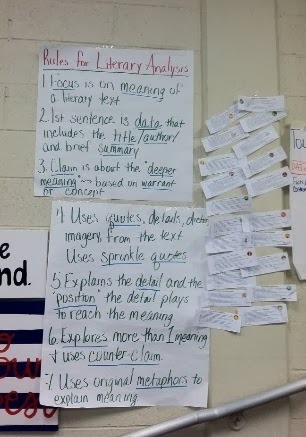
Scaffold 3: Cloze Writing Technique
Another key to the success of this lesson was the third scaffold The Cloze Writing Technique (Figure 3). This scaffold provided students with sentence starters gleaned from the student exemplar and allowed them to focus on the content of their arguments without worrying about how to begin. As students struggled to articulate their ideas, they worried that their writing sounded “so simple” and “so elementary.” By helping students articulate their ideas more complexly, Mrs. Montecuollo and Mrs. Westbrook honored each student’s thinking. Thus, students were more willing to take a risk and push themselves from summary to analysis.
Figure 3. Cloze Writing Technique

Scaffold 4: Class Blogs as Formative Assessment
Finally, students posted their pieces to Mrs. Westbrook’s class blog (Figure 4). After posting the students received differentiated feedback to help revise their responses. In addition, the blog is public, so students had a real audience and real responses to reference as they worked to fill gaps in their writing/understanding/learning. In this way, these instructors maximized the learning for all of their students and ensured the class met standard.
Figure 4. English 9 Class Blog

English 9 students blogging using a combination of their own devices, Chromebooks, and MacBooks.
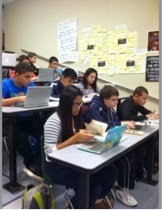
 Image credit: http://www.masoncontractors.org/2010/...
Image credit: http://www.masoncontractors.org/2010/...Scaffold 1 & 2: Student Generated Exemplars and Writing the “Recipe” for Literary Analysis
First, Mrs. Westbrook created a task that required students to identify and interpret the underlying meaning of a piece of literature and then to make arguments about it. She began by showing a student written exemplar (Figure 1) to demystify the task and give students a concrete model for their own writing. Then students generated a list of the characteristics of literary analysis demonstrated in the example. This strategy allowed the teachers to delineate the requirements for the task and tied those requirements to specific writing moves used in good analysis (Figure 2). It also provided clarity for targeted feedback. For example, Mrs. Montecuollo and Mrs. Westbrook could read student responses and be clear about what each writer needed to add or change in order to meet standard.
Figure 1. Annotated Student Exemplar

Figure 2. Teaching Chart: Rules for Literary Analysis

Scaffold 3: Cloze Writing Technique
Another key to the success of this lesson was the third scaffold The Cloze Writing Technique (Figure 3). This scaffold provided students with sentence starters gleaned from the student exemplar and allowed them to focus on the content of their arguments without worrying about how to begin. As students struggled to articulate their ideas, they worried that their writing sounded “so simple” and “so elementary.” By helping students articulate their ideas more complexly, Mrs. Montecuollo and Mrs. Westbrook honored each student’s thinking. Thus, students were more willing to take a risk and push themselves from summary to analysis.
Figure 3. Cloze Writing Technique

Scaffold 4: Class Blogs as Formative Assessment
Finally, students posted their pieces to Mrs. Westbrook’s class blog (Figure 4). After posting the students received differentiated feedback to help revise their responses. In addition, the blog is public, so students had a real audience and real responses to reference as they worked to fill gaps in their writing/understanding/learning. In this way, these instructors maximized the learning for all of their students and ensured the class met standard.
Figure 4. English 9 Class Blog

English 9 students blogging using a combination of their own devices, Chromebooks, and MacBooks.

Published on January 02, 2014 06:58



